Read Reviews
The Best Thermostatic Radiator Valves
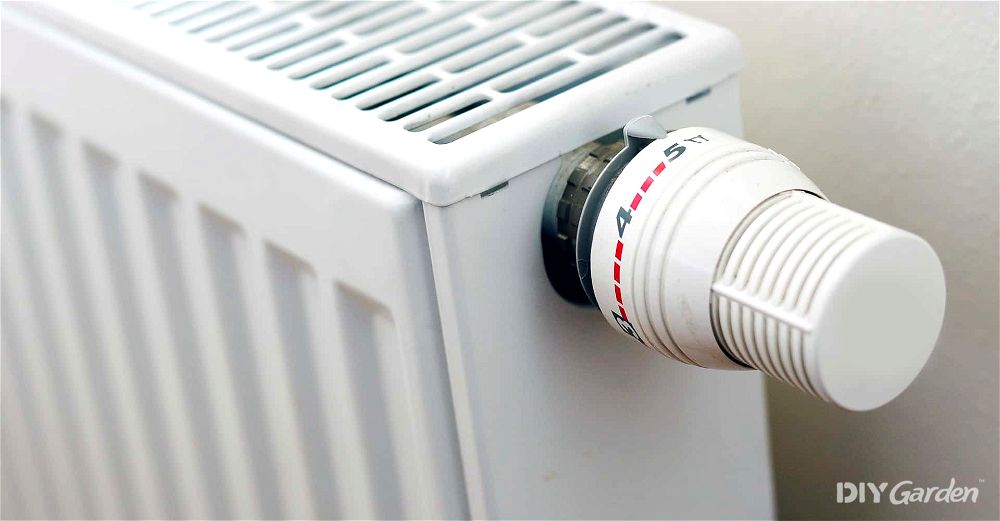
-
Myson Thermostatic Radiator Valve Replacement Head Only
-
West Radiators Thermostatic Radiator Valve Set - 15mm
-
Drayton TRV4 Thermostatic Radiator Valve
-
iBathUK White Thermostatic Towel Radiator Valves
Thermostatic Radiator Valve Reviews
- Convenient as can be fitted onto the body of existing valve without removing the whole thing
- Quick installation in a couple of minutes
- Ergonomic head is easy to turn and temperature markings are visible at all times
- Good value option as only have to buy valve head and not entirely new unit
- Should fit most valves with a 32 mm fitting
- Difficult to know which valves it will fit and which is won't - only confirmed to definitely fit Myson valves
- May be considered aesthetically old fashioned compared to more modern, contemporary valve heads
For anyone who already has a Myson radiator, this Myson Standard Thermostatic Radiator Valve Replacement Head offers a like-for-like replacement if something has stopped working.
It’s not unusual for TRVs to get knocked and break, and if this is the case, this replacement head can be attached without having to undo any of the valve’s body. This is a good value option if you don’t need to buy and fit an entirely new valve – it’s a useful way to save both time and money.
Unfortunately, valve head fittings aren’t universal, so you shouldn’t expect to be able to install this head if the valve on your radiator is a different brand. There are some cases where it might fit, but there is also a lot of variation between different models – so nothing is guaranteed.
Installation is very straightforward, and can be done in a matter of minutes with minimal tools required. Also, due to the design of the head it’s easy to turn and adjust – it has an ergonomic shape that is easy to grip, and none of it is covered by a casing (which is how some other models are designed).
As a result, it is easy to see all of the settings at any time, and change to the most appropriate one.
Did you find this review helpful?
- Standard 15 mm (1/2") couplings that fit on the majority of UK radiators
- Solid-feeling finish with a good weight to them
- Fit flush against the radiator and wall meaning they don't stick out into the room
- High-quality finish which suits designer radiators without bringing the appearance down
- Suitable for fitting on towel rails as well as standard radiators
- Care should be taken when fitting to make sure that scratches don't occur when tightening the nuts
Once you’ve forked out for a decent radiator, there’s nothing less satisfying than having to bookend it with unattractive valves. Fortunately, this West Radiators Thermostatic Radiator Valve Set provides high-quality, chrome-plated valves that pair nicely with even designer radiators. This is the best thermostatic radiator valve set overall.
The thermostatic radiator valve and lockshield both have a standard 15 mm (1/2”) coupling that will fit the majority of UK radiators. Plus, they’re easy to fit. They might not be the cheapest option on the market, but there are many ways in which their cost can be justified.
Primarily, the build quality is high, with the valves feeling heavy and well finished. The nuts have been rounded off, to give more of a polished appearance, and the thermostatic radiator valve is neatly designed.
They’re made from brass and finished in chrome, to make them versatile to use with a range of different radiators. When fitted, the valves sit flush, and don’t stick out in front of the radiator as can often happen. As a result, they don’t encroach on the space, and in bathrooms with limited floor area, this can be particularly beneficial.
Care does need to be taken when fitting the valves, so as not to damage or scratch the casings – due to the rounded-off nuts, a spanner can slip if it isn’t properly secured.
All in all, whether you’ve got a new designer radiator or are just looking to improve the appearance of your existing model, this is the best thermostatic radiator valve set overall, giving a polished, quality finish. They may be more on the expensive side, but they still offer value for money.
Did you find this review helpful?
- High-quality finish that complements the appearance of most radiators
- TRV4 valves have been on sale for many years with customers able to vouch for their durability
- Can be fitted either side of the radiator, on the flow or return, making installation easier for a DIY novice
- Easy-to-follow instructions mean there is no confusion during installation
- Thermostat works well to control temperature
- White plastic caps may not appeal to everyone depending on décor and appearance of radiator
With a good reputation for durability and performance, the Drayton TRV4 Thermostatic Radiator Valve is well regarded amongst both plumbers and consumers.
It comes with both a TRV and lockshield valve, and they can be positioned either on the flow or return of the radiator making them easy to install – even for a DIY novice. The instructions are also simple to follow, making the process straightforward.
Whilst their white-plastic caps may not appeal to everyone’s aesthetic sensibilities, the quality of the valves themselves is hard to fault. They have a typical 15 mm (1/2”) coupling to fit standard UK radiators, a tight seal, and are rated in ‘class 1’ for efficiency by the European Valve Manufacturers Association.
Drayton has a good reputation as a company, so there is also reassurance in buying their valves as they have proven themselves to be reliable over the years. These are some of the best thermostatic radiator valves on the market if you’re after quality – they offer good value for money and won’t see you needing to replace them for a long time.
The thermostatic radiator valve also works well to control the temperature and help save on energy consumption in the house.
Did you find this review helpful?
- Relatively good value option when comparing price with quality
- Combination of white and chrome creates a neat, clean finish
- Suitable for use with both towel radiators and standard radiators
- Comes with standard 15 mm (1/2") couplings that fit onto the majority of UK radiators
- Plastic components may be slightly less durable than entirely-metal counterparts
Buying expensive radiator valves can add up, especially if you need several for different rooms in the house. Fortunately, these iBathUK White Thermostatic Towel Radiator Valves are a relatively inexpensive option – they offer reasonable quality without breaking the bank. This is the best thermostatic radiator valve set if you’re after a budget-friendly option.
Suitable for fitting onto most standard UK radiators, they have a 15 mm (1/2”) coupling and are easy to fit. Whilst they describe themselves as “towel radiator” valves, there’s no reason they can’t be installed on standard radiators as well.
They’re streamlined and modern in appearance, with a clean gloss-white finish. The core is made from solid brass, with a chrome coating on top to complement the white components.
As a result, they blend in with most white and chrome radiators without looking old fashioned or chunky.
When connected to a towel rail, the thermostatic radiator valve makes it easy to heat the radiator when towels need to dry, without wasting money unnecessarily by having it on the maximum temperature all the time.
Although the plastic element makes these valves slightly lower quality than some of the entirely-metal valves, this is the best thermostatic radiator valve set to buy on a budget. Plus, if you have white radiators, they will blend in well.
Did you find this review helpful?
How to Choose The Best Thermostatic Radiator Valve
Valves are an integral part of any central heating system, so why not get some that can help make the radiators more useful and economical to run. Operating the same way as manual valves, thermostatic radiator valves (TRVs) can be used to turn individual radiators on and off. However, they are also able to detect the temperature of the room and self-regulate.
Requiring less human input than standard valves, TRVs have a range of benefits. If you’re looking at purchasing a thermostatic radiator valve but you’re not sure where to start, the following tips should help you make the right decision.
Benefits of Using a Thermostatic Radiator Valve (TRV)
- A thermostatic valve can provide room-by-room control when it comes to temperature. With the valves in place, each radiator can be turned on or off individually, and set at a certain temperature, so you can keep each room comfortable without wasting electricity. This can be particularly useful in warmer rooms, such as south-facing ones, where the radiators may not always need to be turned up as high as in other areas.
- Unlike regular radiator valves, TRVs can monitor the temperature in the room. This means they can adjust the flow of water into the radiator to maintain your ideal temperature. Once the room reaches a certain temperature, the radiator will receive less hot water. If the room drops below this temperature, the radiator will receive more hot water.
- A thermostatic radiator valve can also help prevent frost damage. Many models will have a frost mode, which means they can be set to ‘off’, yet still come on if the temperature in the room drops below a certain level (for example, 7°C).
- You can also use a thermostatic radiator valve to help prevent mould. The valve will allow you to keep temperatures higher specifically in cold, damp-prone rooms (such as bathrooms) without wasting heat throughout the whole house.
TRVs are also very affordable and available in a range of designs. They can be purchased to suit all types of radiator, so they are definitely a useful addition to have.
Design and Finish
There are plenty of different valves on the market, to suit a range of aesthetics. Unless you’re working to a very tight budget, and are less worried about appearances, you’ll be able to find TRVs have the same finish as your radiator.
TRVs are available in all different colours, from chrome to black, brass to white. Here on this page predominantly chrome-coloured valves are featured, because they tend to be the most popular and versatile. However, if you have a certain ‘look’ in mind, you’re bound to find a matching model online – you just might have to pay a bit more for it.
Chrome radiator valves can be some of the most contemporary-looking. White valves blend in well with white radiators, and can offer a more traditional look. They can look a little dated, so it’s important to consider the style carefully. White valves often have plastic elements which some people may prefer to avoid. If you have a darker radiator, like one with an anthracite finish, there are also valves available to match.
READ NEXT: The Best Electric Wall Mounted Panel Heater
Ease of Installation
Fitting a TRV is generally fast and simple. Some people still choose to have them fitted professionally, but for the most part there is enough information online for anyone wanting to install a TRV themselves.
Fitting a ‘bidirectional’ valve is slightly less complicated than a unidirectional model, because it doesn’t matter which side of the radiator the TRV and lockshield are positioned. If the valves are unidirectional, the TRV valve will need to be fitted onto the flow pipe, and the lockshield onto the return pipe.
The flow pipe refers to the pipe through which water flows into the radiator, and the return pipe refers to the pipe through which water leaves the radiator.
Most modern TRVs are bidirectional; however, it’s still good practise to fit the TRV valve to the flow pipe and the lockshield to the return pipe.
READ NEXT: The Best Fan Heater
The Future of TRVs
For most standard homes, a traditional TRV will be all that’s needed to keep heating and energy usage in check. However, it may interest you to know that there is a radiator valve evolution taking place…
It would be remiss not to mention the future of the thermostatic radiator valve: the smart radiator valve.
Of course, it makes sense that even a radiator valve can now be connected up to Amazon Alexa, Google Home or whatever smart system your home is wired up to – few things can’t, nowadays!
But what difference would having a smart radiator valve make, and is smart heating worth the investment?
The primary benefit of having a smart radiator valve is that its smart thermostat can be controlled either from an app or via voice command. Instead of individually changing the radiator valve by going to the specific room and twisting the valve head (à la traditional thermostatic valves), everything can be adjusted from one main motherboard.
The best smart radiator valves will allow you to set the temperature in a specific room, set a heating schedule, and turn radiators off altogether – all remotely.
To be honest, this all sounds pretty good so far, so you might be wondering what are the disadvantages (if any) of installing smart heating and smart radiator valves.
Well, the primary downside is that purchasing a smart radiator valve for each room of the house can get expensive, fast. They’re certainly a lot pricier than a standard radiator valve. Some people choose to install smart heating only in the rooms that they use frequently, because it allows you to prepare the room and keep it at a comfortable temperature.
Besides costs, an additional thing to consider when it comes to installing a smart radiator valve is whether it’s worth the effort. If you love your tech, then it might be. But if you’re more fond of a traditional way of doing things, a standard radiator valve may already be smart enough.
READ NEXT: The Best Kitchen Plinth Heaters
Thermostatic Radiator Valve FAQs
Thermostatic radiator valves (TRVs) self-regulate, so they adjust the flow of water that goes into the radiator depending on 1) the temperature they are set to, and 2) the temperature of the room. The valve head goes on top of the valve body, and expands or contracts when the temperature in the room changes.
As the valve head changes, a pin is adjusted in the valve body so that the valve opens or closes. When the head expands, the valve closes so the radiator receives less hot water. As the room cools, the head contracts which opens the valve body to receive more hot water into the radiator. More hot water means the radiator will become warmer.
While thermostatic radiator valves can be installed on all radiators, there are some cases where it’s best not to install a TRV.
For example, it’s also best to avoid putting TRVs in bathroom radiators. This is because the heat produced from having a hot shower or bath may confuse the thermostat. Instead of maintaining the correct temperature, the TRV will cut out before intended. This might make it harder to clear damp air and steam.
It’s also not necessary to put a TRV in the room where your principle thermostat is located. Doing so can confuse the thermostat, and in some cases can cause it to overcompensate – pushing out more heat than necessary via the central heating.
Getting the temperature right for your home can be tricky at times. Ideally, your home should be no warmer than 20°C during the day when you are at home.
When you’re away from home, an ideal temperature for winter is between 12°C and 19°C. Any colder than 12°C, and your pipes may be at risk of freezing. Often, information regarding whether or not to leave your heating on when away (and at what temperature) is detailed in your home insurance policy. It’s worth taking a look to avoid doing anything that may void the insurance.
At night time, your thermostat should be set to between 17°C and 19°C for a comfortable sleep.
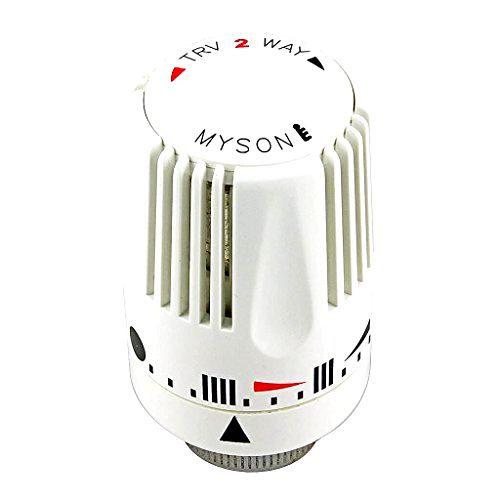
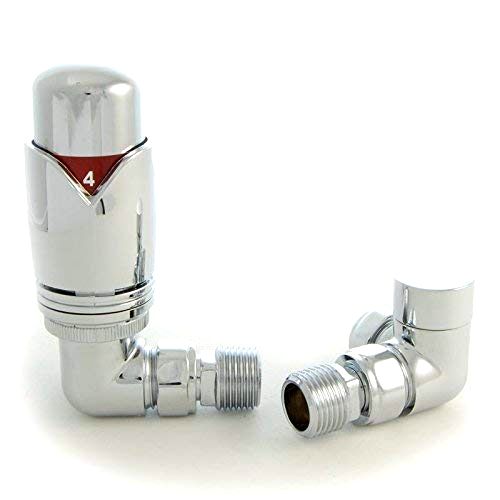
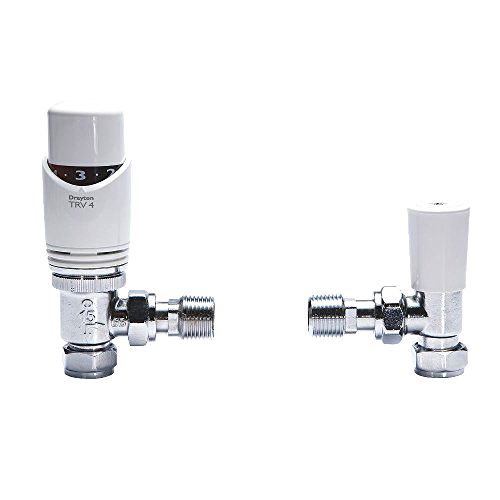
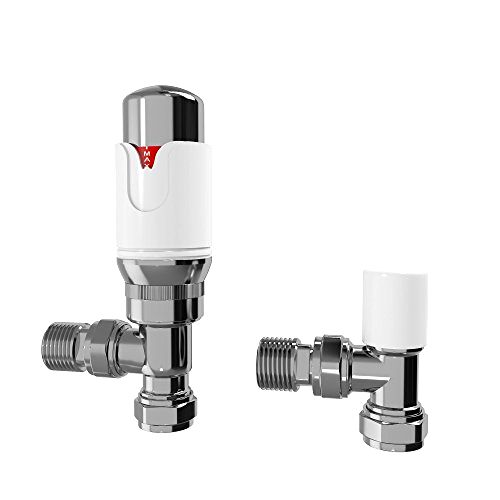

Share